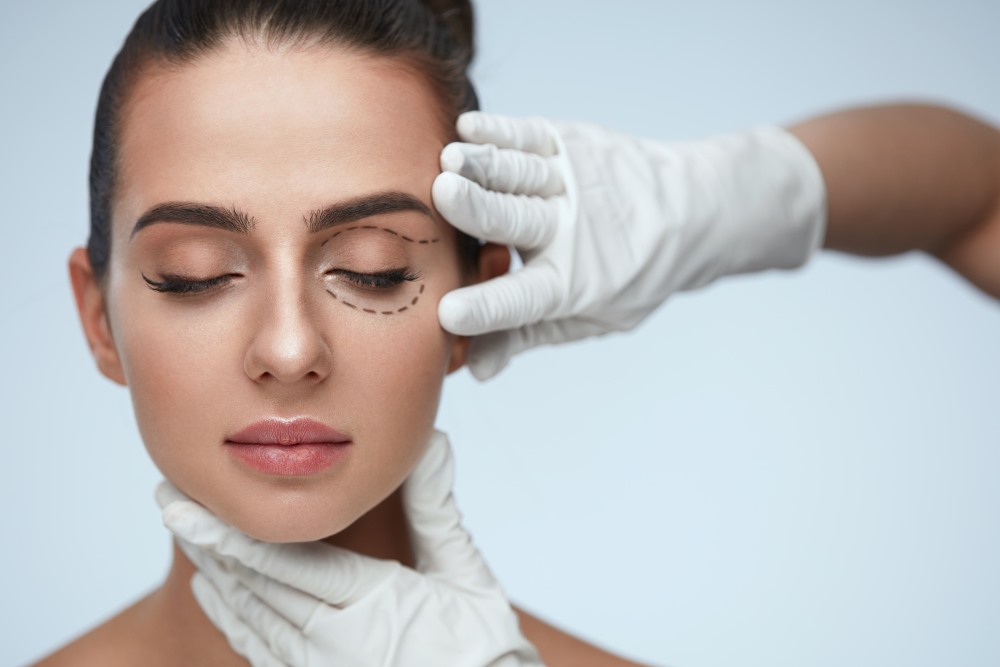Post-blepharoplasty management, whether it is for smoothing wrinkles, removing excess skin, or refreshing your appearance, all necessitate adequate rest and self-care. The activities to avoid in the days and weeks following surgery are just as critical as the procedure itself. Below is a comprehensive guide focusing on key activities to steer clear of during blepharoplasty recovery to ensure optimal healing and results.
Refrain from Activities That Increase Blood Flow to the Eyes
For the first two to four weeks post-surgery, any and all activities that boost blood circulation to the head and eyes may lead to inflammation, swelling, bruising, or even wound reopening.
These include:
- Strenuous exercises such as running, aerobics, cardio and high-impact workouts. Basically, avoid any training that significantly elevates heart rate and induces profuse sweating.
- Lifting heavy objects or bending. Even routine tasks like lifting objects, bending over, or lying flat can raise the blood pressure around your eyelids
If you wish to undertake physical activity that does not strain the eyes, opt for light walking only after a few days. Also, it is important to keep your head elevated while lying down or sleeping (use 2–3 pillows) to reduce pressure and swelling and avoid sleeping on your stomach or your sides.
Avoid Wearing Contact Lenses or Apply Makeup on the Eyes for At Least 2 Weeks
Post-op eyelids are very delicate and need time to heal. Using contact lenses or applying cosmetics too early can cause irritation leading to infection.
- Contact lenses: Avoid wearing contacts for at least one to two weeks, or until okayed by your doctor
- Eye makeup: Hold off on applying eyeshadows, mascara, eyeliner, or any cream-based products close to your incisions for at least two weeks
Stay Out of the Heat, Sun, or Immersing your Head Under Water
Skin that undergoes healing post-surgery is extra sensitive. Heat and direct UV exposure from staying out in the sun can exacerbate swelling, cause discoloration and deeper scars, and delay proper healing.
- Heat and sun exposure: Avoid sunbathing, saunas, excessively hot showers and other hot interventions like steam facials. When stepping outdoors, always use UV-blocking sunglasses, apply a fragrance-free sunblock (SPF ≥30) with care to avoid the region around the eyes, and consider wearing a broad-brimmed hat.
- Swimming and water exposure: Wait at least one to two weeks before swimming. Even simple immersion or exposure to water heightens infection risk. Chlorinated water from swimming pools can trigger irritation and inflammation of the surgical wound.
- Showers and bathing: You may shower from the neck down immediately after surgery but avoid getting water directly on your incision sites for about a week.
Do Not Rub, Press, Scratch or Constantly Touch Your Eyes
As mentioned before, the eyelids are very sensitive and delicate till they have healed completely (about 2 weeks) after the surgery and great care must be taken to inadvertently rub or scratch the area.
- Avoid pressure: Do not rub, scratch, or apply any pressure to your eyelid area for at least two weeks. This prevents irritation, infection, and wound reopening
- Take great caution during bedtime: Avoid sleeping on your side or stomach. Always sleep on your back with your head elevated with 2 – 3 pillows to prevent accidental pressure on the surgical area
A post-operative eye patch or shield can be a good option after blepharoplasty to prevent you from accidentally touching, rubbing, or putting pressure on the delicate incisions, especially while sleeping to protect the healing area from injury and infection. A rigid, domed plastic shield is the best option, and it protects the eye by forming a physical barrier over the socket. This patch can be held in place by a tape or a band.
Skip Heavy Chores and Avoid Strenuous Activities
Even the most routine and prosaic household chores can disrupt healing:
- Avoid strenuous tasks that involve heavy lifting, dusting and cleaning, gardening, and similar chores.
- Skip any activity that requires bending or exertion or exposure to the dust or the sun for at least two to three weeks.
- Ease back gradually. Resume daily tasks by slowly easing into your routine only when approved by your surgeon.
Keep Away From Driving Until You are Comfortable and Mentally Clear
Full unblocked vision and mental clarity are important for safe driving. Post-surgical effects like blurred vision, pain or lingering sleepy effects of pain medicines may impair your alertness and response times. Also, having an eye patch for someone not used to wearing one can be a significant source of distraction and discomfort.
Most providers advise a waiting period of at least 5 to 10 days after surgery before driving and that too only when completely weaned off all opioid pain medication and vision is fully functional with the eye patch no longer in use.
Checklist for a Safe and Quick Recovery
Here is a refresher on what to avoid and the precautions to be followed during the post-blepharoplasty recovery phase:
Activities to Avoid
- Strenuous exercise, bending, heavy lifting
- Contact lenses and eye makeup
- Heat, sun, swimming, hot showers
- Rubbing, scratching or touching eyes
- Driving while impaired
- Heavy household chores
Precautions to Follow
- Avoid rubbing or touching the area, especially at night when sleeping
- Avoid sleeping on your sides or stomach
Contact Raymond Douglas Today
Healing safely after blepharoplasty is as vital as the surgical procedure itself. Keeping away from strenuous activity, sun and heat exposure, water immersion, touching and rubbing the eyes, driving prematurely, and heavy chores gives your eyelids the chance to recover gently, securely and completely. Let rest, precaution and patience guide your recovery journey. Before resuming any key activity, always check in with your surgeon as every patient and every procedure is unique.
If you are experiencing issues after blepharoplasty or require additional information about post-blepharoplasty care, don’t hesitate to schedule an appointment with Dr. Raymond Douglas.




